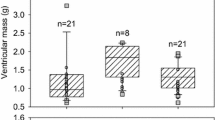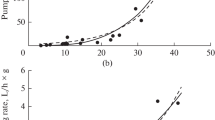Summary
Contractions of oscular membranes of several marine sponges in response to mechanical stimuli were recorded in various ionic media. Previously, failure to record action potentials and to stimulate electrically was reported.
Contractions persisted when sodium was replaced by lithium or potassium but not when the replacement was by choline or sucrose. Contractions were maintained in sea water in which the only univalent cation was potassium; they also persisted in Na-sea water without potassium.
Contractions stopped when either calcium or magnesium was omitted, but addition of an equivalent extra amount of the other divalent cation then restored contractions. Contractions were also maintained when strontium was substituted for calcium and magnesium.
Analyses of contractile membranes yielded average values for Naples sponges of Na 375 mM/kg H2O, K 29.8 mM/kg H2O and inulin space 48.9% of H2O; for Woods Hole Microciona in mM/kg H2O: Na 300, K 66, Ca 8.4, Cl 225, inulin space 40% H2O. The calculated intracellular concentrations for Microciona in mM/kg H2O were: Na 216, K 104.5, Ca 7.8, Cl 45 yielding i/o ratios of Na 0.5, K 11.6, Ca 0.84, Cl 0.09.
It is concluded that, despite relatively normal ionic ratios, mechanical stimuli activate the contractile system in sponges more directly than in muscle.
Similar content being viewed by others
References
Bagby, R. M.: The fine structure of myocytes in the sponges Microciona prolifera (Ellis and Solander) and Tedania ignis (Ducassaing and Michelotti). J. Morph. 118, 167–182 (1966).
Bishop, D., and H. Hoffman-Berling: Extracted mammalian sperm models. I. Preparation and reactivation with adenosine triphosphate. J. cell. comp. Physiol. 53, 445–466 (1959).
Bozler, E.: Smooth and cardiac muscle in states of strong internal cross-linking and high permeability. Amer. J. Physiol. 207, 701–704 (1964).
Briggs, A. H.: Characteristics of contraction in uterine glycerinated smooth muscle. Amer. J. Physiol. 204, 739–742 (1963).
Edman, K. P., and H. O. Schild: Need for calcium in contractile responses induced by acetylcholine and potassium in rat uterus. J. Physiol. (Lond.) 161, 428–441 (1962).
Evans, D. H. L., H. O. Schild, and S. Thesleff: Effects of drugs on depolarized plain muscle. J. Physiol. (Lond.) 143, 474–485 (1958).
Filo, R. S., D. F. Bohr, and J. C. Ruegg: Glycerinated skeletal and smoth muscle: calcium and magnesium dependence. Science 147, 1581–1583 (1965).
Frankenhaeuser, B., and H. Meves: Effect of magnesium and calcium on frog myelinated nerve fibres. J. Physiol. (Lond.) 142, 360–365 (1958).
Kingsley, G. R., and O. Robnett: New dye method for direct photometric determination of calcium. Amer. J. clin. Path. 27, 223–230 (1957).
Koechlin, B. A.: On the chemical composition of the axoplasm of squid giant nerve fibers with particular reference to the ion pattern. J. biophys. biochem. Cytol. 1, 511–529 (1953).
Maruyama, K.: Interaction of contractile protein from a sea-anemone with adenosine nucleotides. Sci. Papers Coll. Gen. Ed. Univ. Tokyo 6, 95–111 (1956).
Pavans de Ceccatty, M., M. Cargouil et E. Coraboeuf: Les réactions motrices de l'éponge Tethya lyncurium (Lmk.) à quelques stimulations expérimentales. Vie et Milieu 11, 594–600 (1961).
Prosser, C. L., T. Nagai, and R. A. Nystrom: Oscular contractions in sponges. Comp. Biochem. Physiol. 6, 69–74 (1962).
Rothschild, L., and H. Barnes: The inorganic constituents of the sea-urchin egg. J. exp. Biol. 30, 534–544 (1953).
Sara, M.: Die Porifera (Spongiaria, Schwämme). In: Fauna und Flora der Adria (Hrsg. R. Riedl), S. 105–123. Hamburg: Paul Parey 1963.
Seidel, J. C., and I. Gergely: Studies on myofibrillar adenosine triphosphatase with calcium-free adenosine triphosphatase. J. biol. Chem. 238, 3648–3653 (1963).
Sperelakis, N.: Ca45 and Sr89 movements with contractions of depolarized smooth muscle. Amer. J. Physiol. 203, 860–866 (1962).
Author information
Authors and Affiliations
Additional information
Dedicated to Prof. H. Autrum on the occasion of his 60th birthday.
This work was done in part while the author held a Guggenheim Fellowship. Support from NSF grant G 8795 is acknowledged.
Assistance of Donald Job, particularly in making all calcium and magnesium measurements, is gratefully acknowledged.




